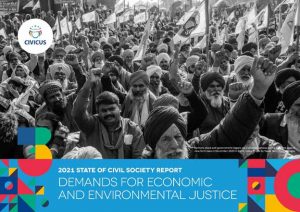by Lea Ypi on 13th November 2019
With the UK facing one of the most important elections in decades, the focus should be on the clear programmatic differences between the main parties, rather than weekly polling outcomes.
If I were to give unsolicited advice to media pundits preparing to comment on the upcoming general election it would be the following: let’s try not to embarrass ourselves again this time. The one lesson to learn about making predictions in the current political environment is that such predictions are about as reliable as turning to the horoscope. Consider how badly some of the predictions made during the 2017 general election have failed. An initial 20-point poll lead for the Tories over Labour led the vast majority of commentators to warn that, thanks to Jeremy Corbyn’s leadership, Labour was at risk of being wiped out. Yet far from that being the case, Labour’s proportion of the vote grew by almost 10 per cent, the biggest swing since Clement Attlee in 1945. Can we avoid making the same mistakes this time?
To ask commentators to stop making predictions, discuss opinion polls, draw inferences from leaders’ average ratings and compare voter turnout would be like asking doctors to stop diagnosing their patients. It would be to deprive political ‘science’ of its scientific status and political debate of its claim to rigorous academic standards.
The turn to opinion-poll analyses and leader’s satisfaction ratings in political discourse has its roots in a number of approaches that have sought to make politics amenable to accurate prediction. Inductivist approaches based on looking for regularities in survey data are one form. Deductivist approaches that seek to model political behaviour on axioms derived from economic theory and assumptions of fixed preferences are another. Remove data sets, regression analyses and average voter preferences from the study of politics and you will have suddenly killed not just a few doctoral projects but an entire discipline.
Median voter
The theory of the median voter, an imaginary character that is neither left nor right, neither obsessed with politics nor indifferent to it, is at the heart of the mainstream study of politics. Pioneered by the political scientist Anthony Downs in his ground-breaking 1957 book, An Economic Theory of Democracy, his method is announced in the title. The underlying assumption is that the political forum is like the marketplace, that citizens are like consumers and that public opinion is the aggregate of private preferences.
Just as there is demand and supply in the market, there is a demand-side of politics, embodied in voters’ preferences, and a supply-side that the main parties seek to capture and translate in public policies.
According to the economic view of politics, the latter is like shopping.
Choosing between more or less public healthcare or between minimal and more extensive taxation is equivalent to choosing between vanilla and chocolate ice-cream. The overall expectation is that in the race to capture the median voter, parties will converge in the centre.
The focus on data analysis, electoral performance, opinion polls and voter preferences that dominates the contemporary study of politics has its roots in an effort to analyse economics and politics as neutral scientific objects.
Questions of value are often sidestepped to focus on measurement. This attitude trickles down from academia to political institutions, from think tanks to polling agencies, from media analysts to PR firms.
Yet just as the economic reality of the 2008 financial crisis challenged the neoliberal economic orthodoxy, political reality is challenging the orthodoxies of political science. Far from being only mildly interested in politics, citizens are deeply passionate about it. Far from disappearing, partisanship has become more relevant than ever. Far from converging in the middle, mass parties have become more ideologically aligned. In the UK Labour has swung to the left, the Tories have swung to the right, and the Liberals are trying to capture a vanishing centre.
Collective action
The time has come to think about politics not as a science, but as an art—the art of governing. Politics, as the former German chancellor Otto von Bismarck famously said, is ‘the art of the possible’. The dominant trends in political analysis discourage that approach: they insist on the regularities of past individual behaviour rather than the possibilities of future collective action.
Changing course requires thinking about democracy not as the aggregation of fixed preferences, but as the process through which citizens develop their views in communication with each other. This means thinking of parties and movements not as trolleys of shopping items but as nurseries of political commitment.
Focusing on the median voter tells us very little about what shapes citizens’ political views. Average percentages of voting intentions week in week out tell us very little about how citizens exercise their political judgement. If we only focus on individual preferences, we end up taking the status quo for granted and undermining a future-oriented and value-laden idea of political change.
The upcoming general election is one of the most important in decades. It happens to be also one of those rare occurrences in a liberal democracy where there are clear programmatic differences between the main political parties. Is it too much to ask that we focus on the difference between ideas, rather than the fluctuation in numbers?
This article appeared on the London School of Economics British Politics and Policy blog
(Lea Ypi is a professor of political theory at the London School of Economics and Political Science and co-author of The Meaning of Partisanship.)




